En bloc resection of a posterior tumor (C1 to C7)
1. Introduction
En bloc resection of a primary tumor is a significant undertaking, even in the most experienced hands. We therefore recommend referring these cases to quaternary centers with experience in primary spine tumor surgery.
En bloc resections
Terminology is essential in primary tumor management.
An en bloc resection refers to a surgical attempt to remove a tumor in one piece without violating it.
On the other hand, an intralesional resection or a curettage refers to a deliberate intralesional resection.
An en bloc resection needs to be associated with a pathological margin description to be correctly defined.
Four types of margins are described:
- Intralesional – resection margin is within tumoral tissue
- Marginal – resection margin is within a reactional zone or pseudocapsule (in the spine, the epidural margin is often marginal)
- Wide – resection margin is within normal tissue
- Radical – this is extracompartmental resection and, as such, does not apply to spine tumors
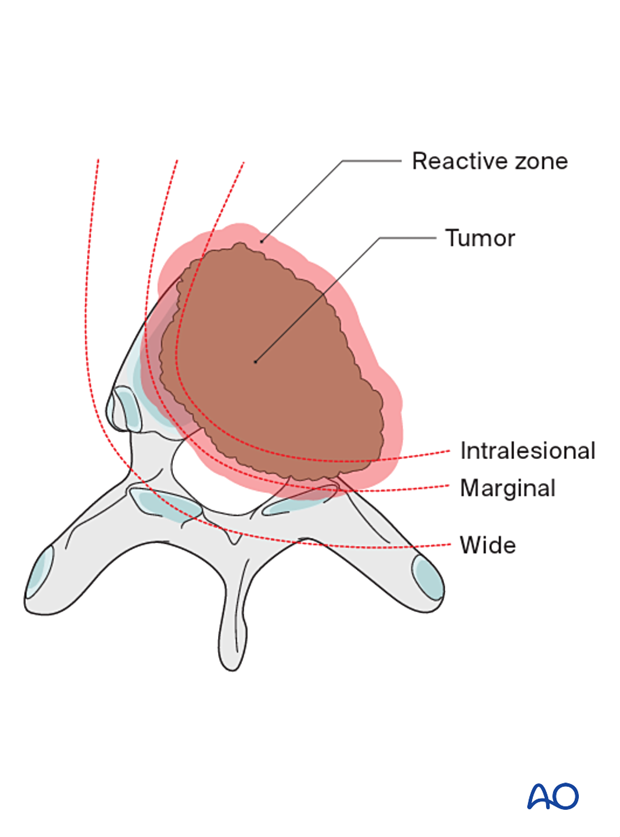
Feasibility
Two conditions need to be met for an en bloc resection to be deemed possible:
- If we consider the spinal canal as a ring, there needs to be enough circumference of that ring to be removed piecemeal to allow delivery of the neural element
- Access to the nerve root sleeve at its dural origin is required

If these conditions are not met, an en bloc resection will not be possible without a planned transgression of the tumor.
In this illustration, the spinal canal is circumferentially surrounded by a tumor. There is not enough uninvolved portion of the ring to allow an en bloc resection.
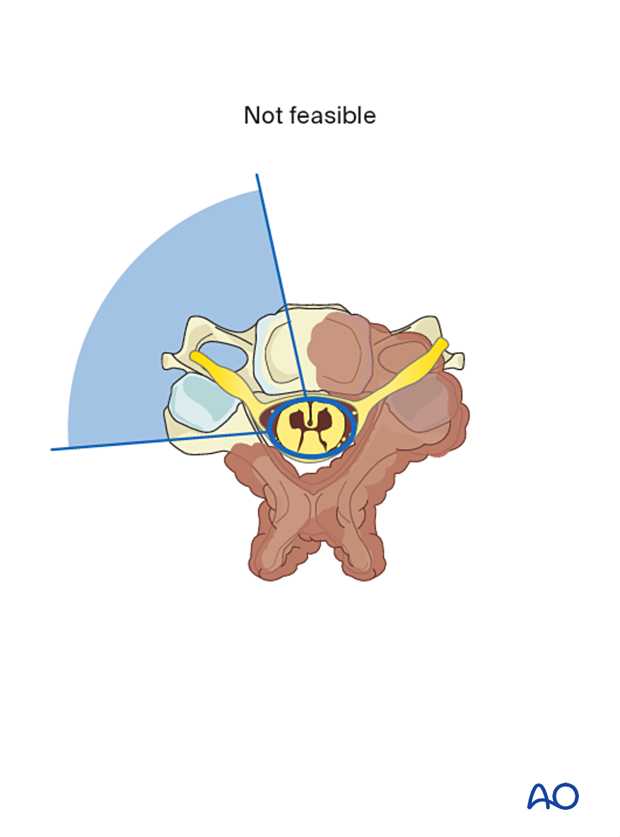
2. Planning
Preoperative management
Proper planning is instrumental in the management of primary spine tumors. A multidisciplinary approach may be required depending on the localization of the tumor.
This picture shows a right C3 lateral mass osteoblastoma.
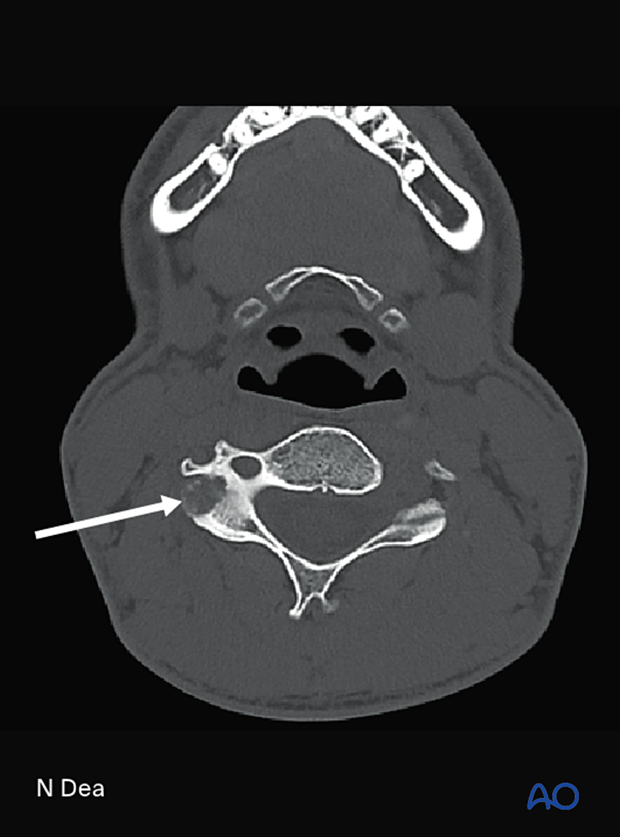
Embolization
Embolization procedures are recommended to reduce operative blood loss in hypervascular tumors, especially during more extensive resections.
Embolization should be considered for hypervascular tumors, such as giant cell tumors, aneurysmal bone cysts, and hemangiomas.
The role of the embolization is:
- To reduce the vascularity of the tumor
- To facilitate dissection around the tumor
- Mapping of spinal cord vascular supply and vertebral artery anatomy
Embolization on its own may also have a therapeutic effect.
This image shows the embolization of a hypervascular tumor.

Resection strategy
A posterior approach is recommended for a cervical tumor involving the posterior element.
The goal is to disconnect the tumor from the intact vertebral body and deliver the tumor posteriorly.
A wide visualization is essential in these cases, and a laminectomy involving one level above and below the tumor is recommended.
The goal is to achieve:
- Good visualization of normal and abnormal anatomy
- Safe decompression of the neural elements
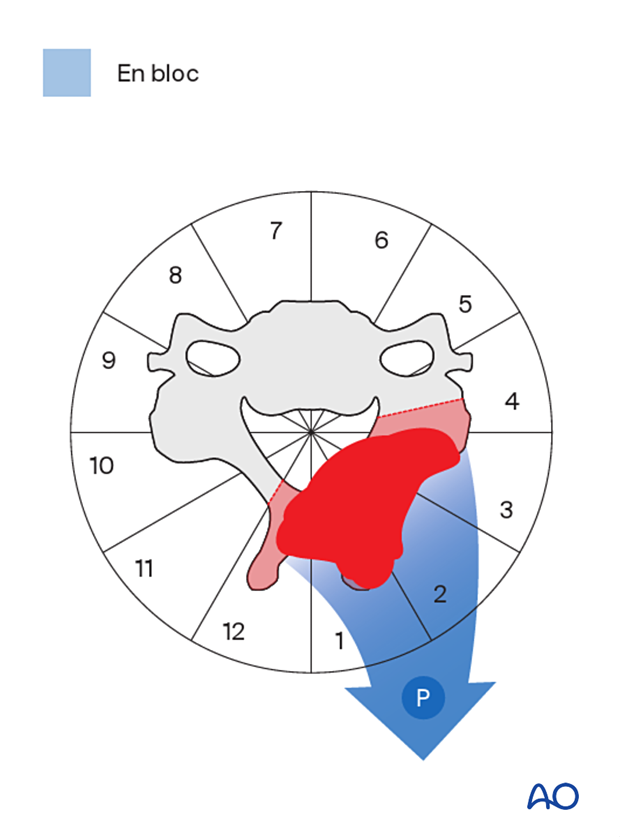
Reconstruction strategy
A posterior element resection is less destabilizing than a vertebrectomy. A fixation of two vertebrae above and below is sufficient.
As the procedure is often curative, it is important to verify that the spine is reconstructed in good alignment, and a solid bony union should be attempted.

If a posterior element tumor only involves WBB segment 1 and/or 12, an en bloc resection can be performed without the need for an instrumented fusion.
A posterior-only approach may also be used if a posterior element tumor is unilateral and involves up to WBB segment 4 or 9.
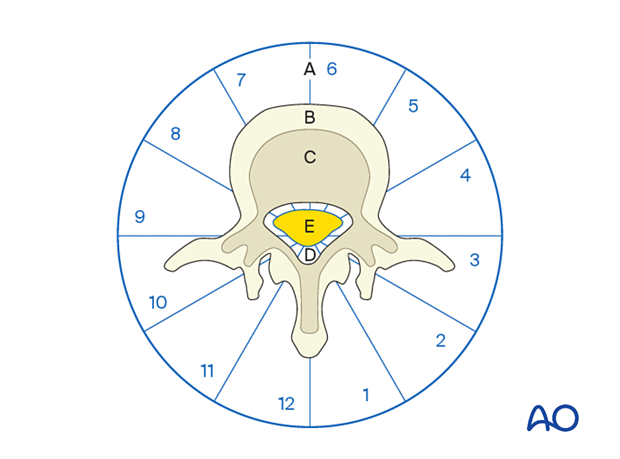
Case-based scenario
Every case is unique.
To illustrate the surgical principle of an en bloc resection in the cervical spine with a posterior release, we will use a C5 tumor located in segments 12–3 of the WBB classification.
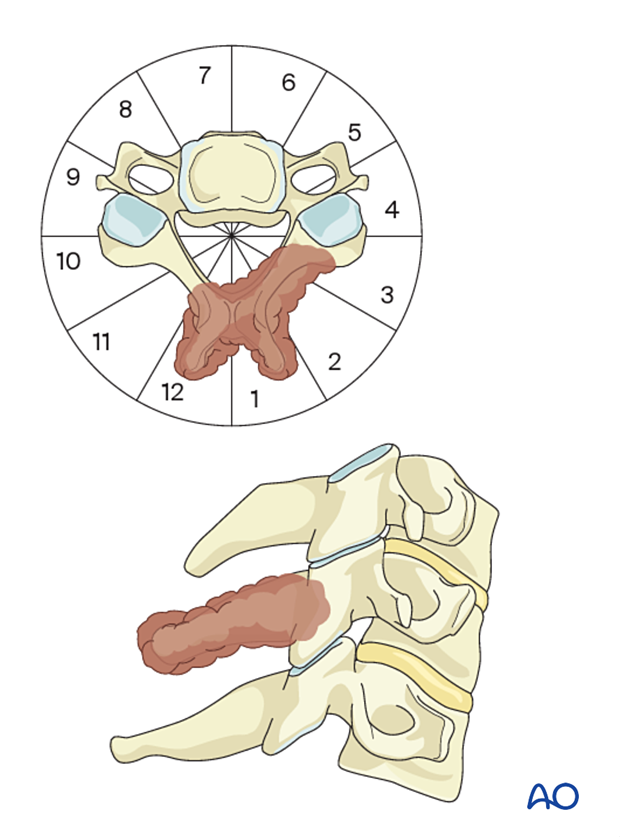
3. Patient preparation and surgical access
Patient preparation
The patient is placed prone.
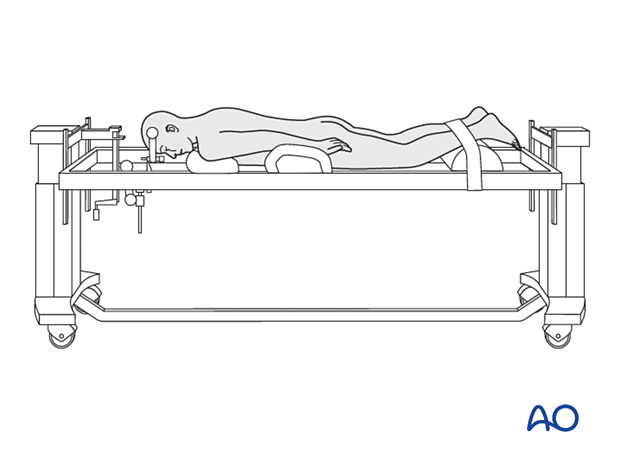
Surgical access
A posterior midline approach to the cervical spine is performed.
A wider dissection will typically be performed for primary tumors compared to a trauma case.
Careful analysis of the preoperative imaging is important to avoid tumor violation during the approach.
Following a midline incision, the subcutaneous tissues are dissected down to the chosen dorsal plane of dissection.
The dissection is carried laterally through the soft tissues around the tumor until the normal bone is reached.
Review preoperative images to verify whether the tumor invades the lamina. In such cases, exposure of the posterior elements should be performed with great care, and the use of Cobb elevators should be avoided.
A cuff of normal muscle will be left on the tumor during the dissection.
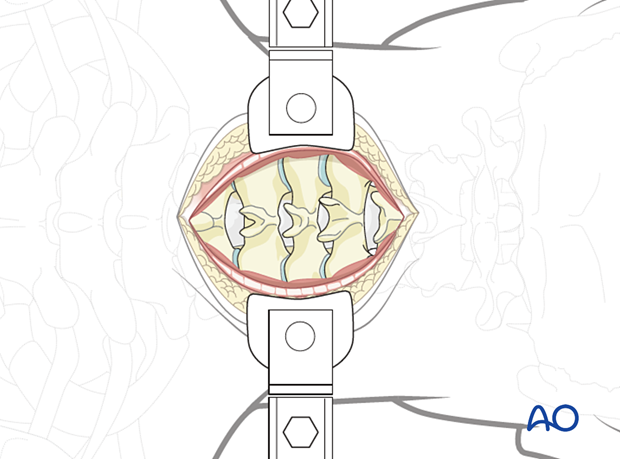
The incision may need a cranial extension when the tumor involves the upper cervical spine.

The incision may need a caudal extension when the tumor involves the lower cervical spine.
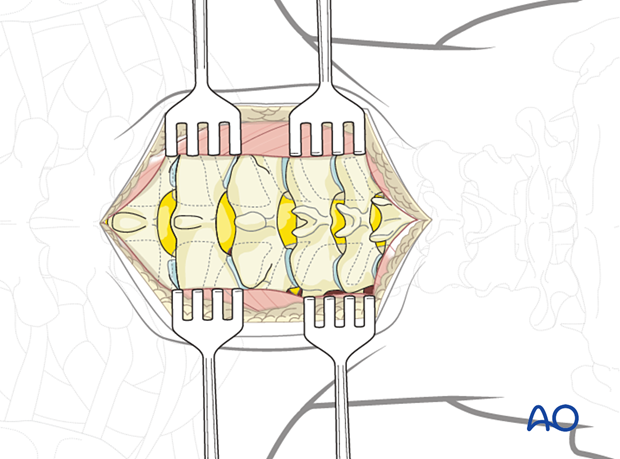
4. Instrumentation
Screw insertion
Insert all screws according to the preoperative plan.
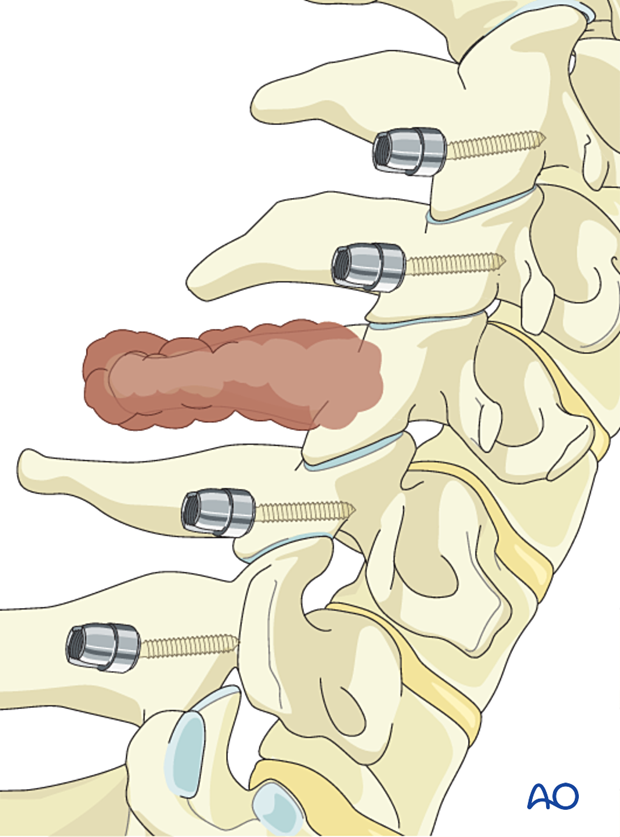
If C1 instrumentation is indicated, lateral mass screws are used.
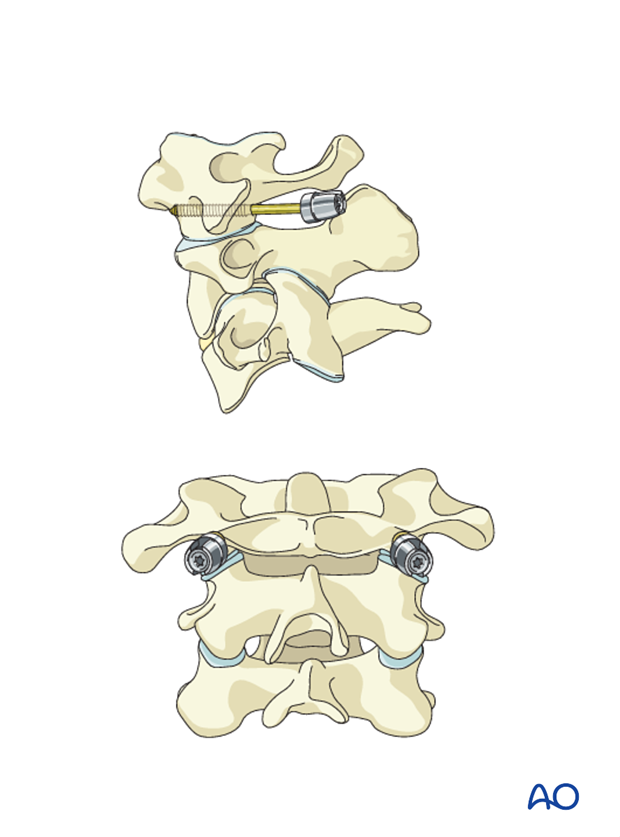
For C2 fixation, the following options are available (in order of preference):
Consideration is given to using pedicle or laminar screws when doing an occiput to C2 fusion, as the starting point for pars screws often compromises the facet joint.
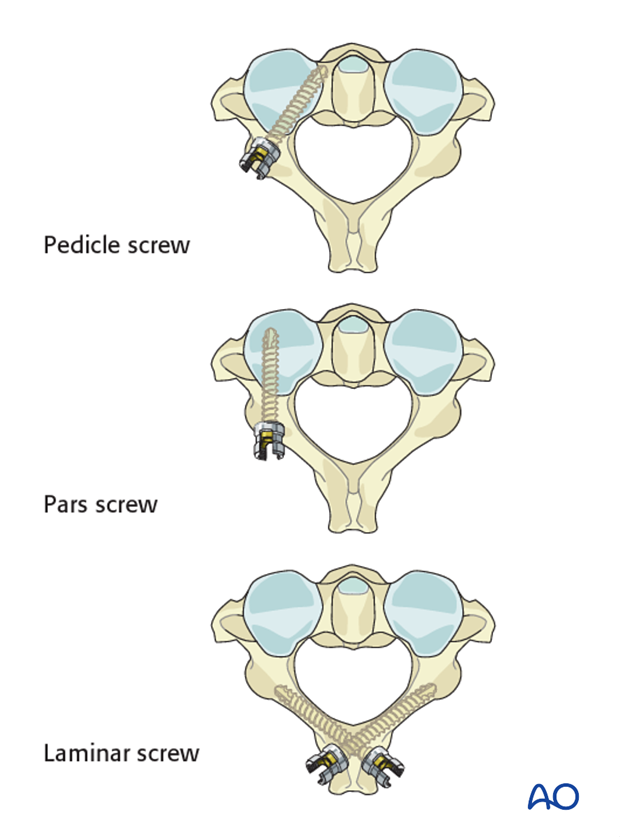
Fixation can be achieved with either lateral mass screws, pedicle screws, or a combination of the two.
Because lateral mass fixation is generally sufficient and carries less risk, pedicle screw fixation is limited to rare cases where lateral mass fixation would be insufficient or is not possible. A pedicle screw is most often used in C7 if instrumented.
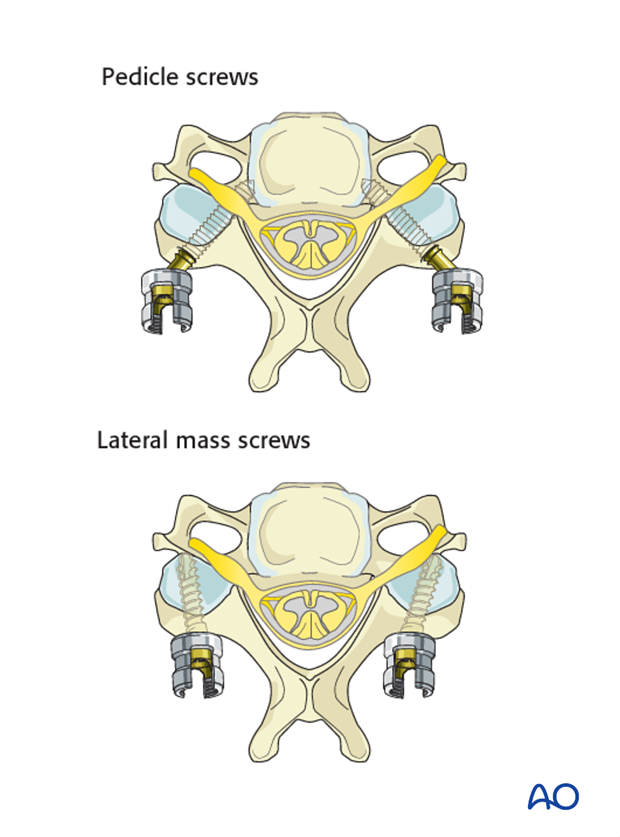
Rod contouring
Every effort should be made to contour the rod to decrease the risk of induced sagittal or coronal malalignment.
Contour the rod to align it with the lordosis achieved during positioning.
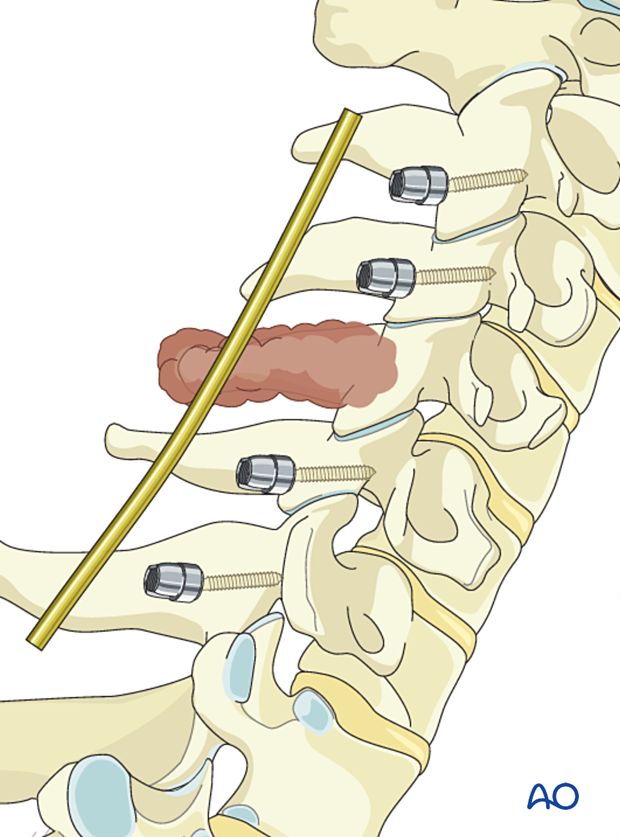
Occipital instrumentation
Extending instrumentation to the occiput may be necessary when the tumor involves the higher cervical spine.
Thoracic instrumentation
Extending instrumentation to the thoracic spine may be necessary when the tumor involves the lower cervical spine.
5. Decompression
Laminectomy
Perform a laminectomy according to the preoperative plan.
Dissection should progress from normal to abnormal tissues to protect normal neurological elements and facilitate dissection.

Bony release
Disconnect the posterior element from the anterior element by performing an osteotomy. Start the osteotomy where the lateral soft tissue dissection reaches normal bone and continue until the spinal canal is reached.
It is essential to plan the osteotomy through normal bones with adequate negative margins.
In this case, the osteotomy will be through the intact lamina on the right and at the junction of the lamina and lateral mass on the left. Intraoperative navigation can be used as a surgical adjunct.
In the cervical spine, osteotomies are typically performed with a high-speed burr or a bone scalpel.

Once the tumor is fully released, it is delivered.
- The contralateral C5 lateral mass is not instrumented in this case to facilitate tumor surveillance and to decrease the presence of artifacts if postoperative radiation therapy is required.
- C7 instrumentation can be achieved with either lateral mass screws or pedicle screws, depending on the patient's anatomy.
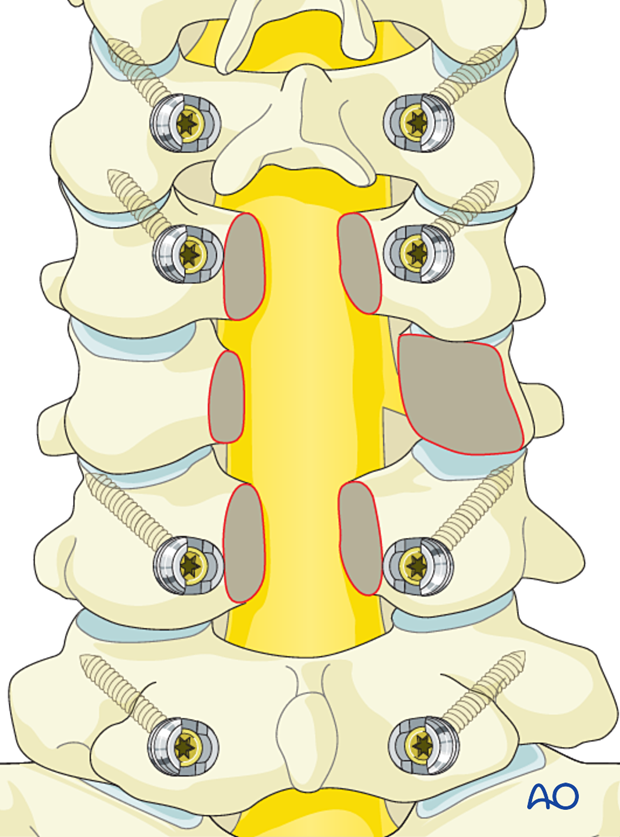
Rod insertion and fixation
Insert the rods into the screw heads and secure them by tightening the inner nuts.

6. Reconstruction
Fusion
Excise the facet capsule and denude/curette the joint surface cartilage surfaces and the posterior cortex.

Insert pieces of bone graft (autograft, allograft) into the decorticated facet joint for fusion.
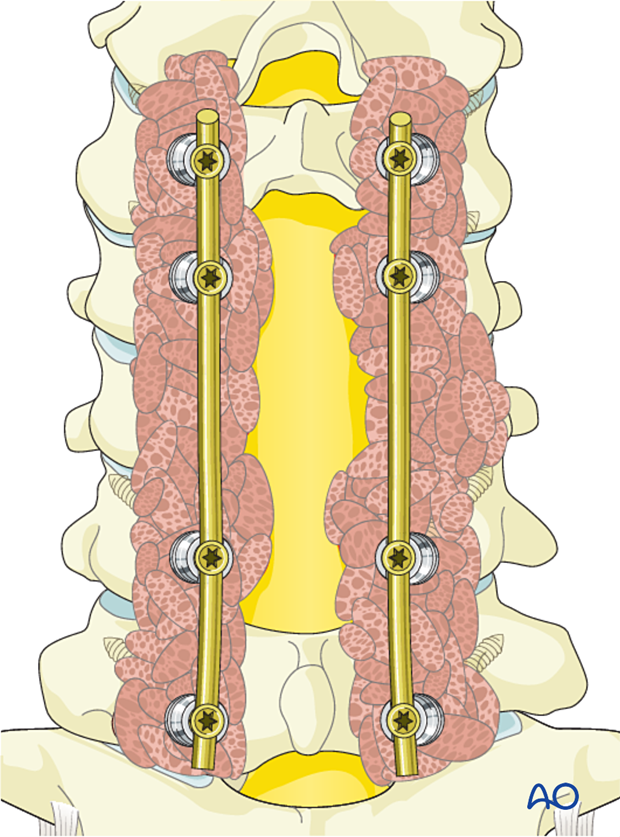
7. Intraoperative imaging
Before wound closure, intraoperative imaging is performed to check the adequacy of reduction, position, and length of screws, and the overall coronal and sagittal spinal alignment.
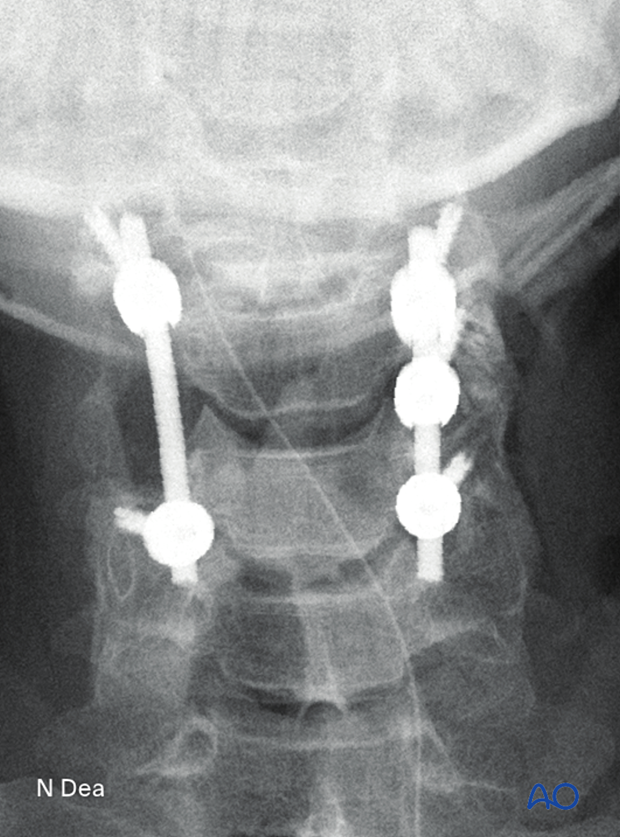
Lateral view of the above case
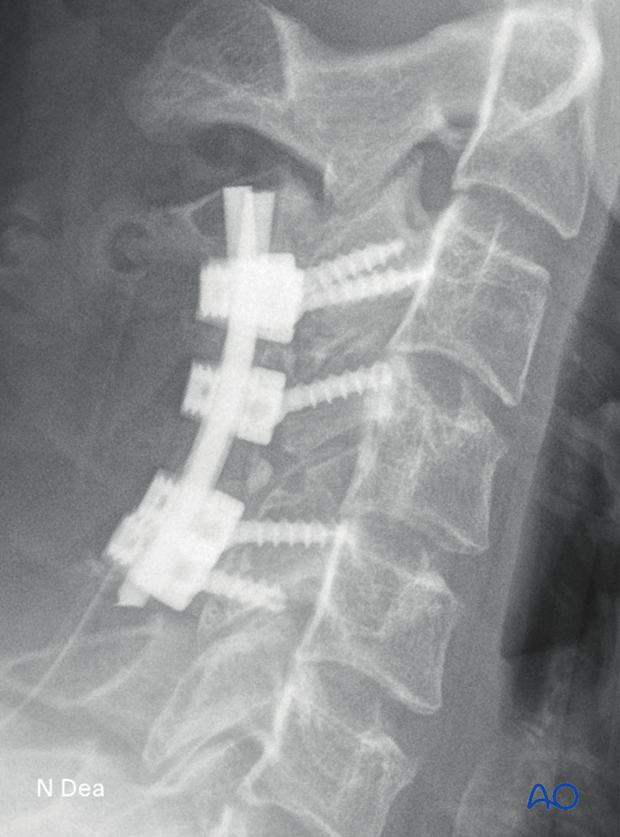
8. Posterior closure
Perform a multilayer closure as described in the approach.
For patients undergoing tumor surgery and/or with a history of radiation:
- Plastic surgery should perform soft-tissue reconstruction to decrease the risk of wound complications
- Intrawound vancomycin can be applied to decrease the risk of postoperative wound complications
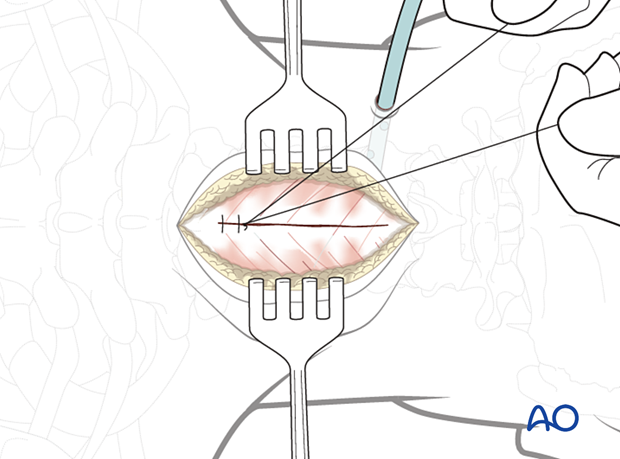
9. Aftercare
Patients are made to sit up in bed on the first day after surgery. Patients with intact neurological status are made to stand and walk on the first day after surgery.
Patients can be discharged when medically stable or sent to a rehabilitation center if further care is necessary.
Throughout the hospital stay, adequate caloric intake of a high-quality diet should be monitored.
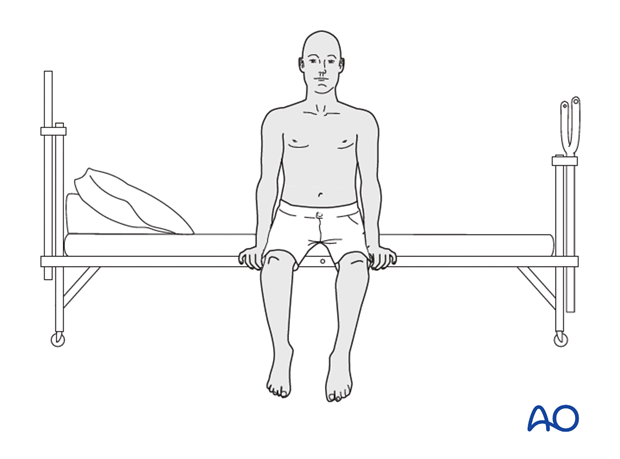
Patients are generally followed with periodical x-rays at 6 weeks, 3 months, 6 months, and 1 year to monitor for hardware failure and with an MRI every 6 months for tumor surveillance.
Some primary benign tumors of the spine can recur years after surgery, and long-term tumor surveillance is important.













